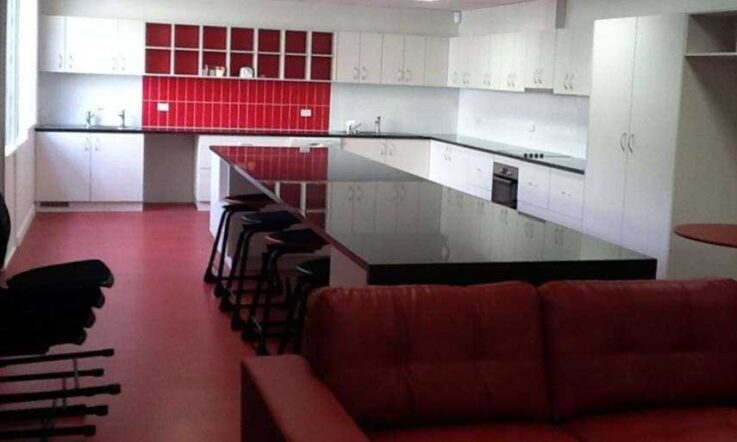My journey for understanding the transactional relationship between the learner and the learning environment began when I walked into a first and second grade public school as a teacher's assistant in East Harlem, New York City.
This classroom was different from anything I had ever experienced; for, it was not a room with rows of seats facing a blackboard, rather it had been organised with a variety of activity settings (Tharp & Gallimore, 1997).
These settings were defined zones where learners were engaged with others as they read, constructed objects, painted, built with blocks, explored the world of science, or were involved in dramatic play.
Given that these activity settings were located along the perimeter of the room, the centre became what I call the 'spaces-in-between'. It was a buffer between, yet it connected the different zones and, when needed, served as a meeting area for the entire class.
Within this 750 square foot classroom, a fluid, flowing, and flexible learning environment lived.
Why collaborative spaces?
According to the online Merriam Webster Dictionary, collaboration means 'to work jointly with others or together, especially in an intellectual endeavour'.
A space that supports collaboration encourages learners to work independently, with one another, or in small social groupings with unlimited access to the learning materials (Rivlin & Wolfe, 1985).
Most importantly, collaboration does not mean that all learners are working with one another on the same tasks throughout development of the project.
After the initial brainstorming meetings, members of the group identify tasks for themselves and proceed to develop their aspect of the project (Lippman 1995). Hence, the expectation and understanding of an activity setting is that these areas will expand and contract as the learners move from distributing their knowledge with one another, to working more independently where each will need to have a defined area where they can create (Lippman, 2013).
According to Lave & Wenger (1991), these concepts are applicable for all age groupings as the learner must be able to negotiate themselves within spaces, and be able to participate independently or peripherally and directly with others.
This suggests activity settings must be purposefully designed – structured to support the learner, the learning, and the things to be learned.
Hence, collaborative settings are generally planned to support independent, one-to-one, or small social groupings of three to six students (Lippman, 2013).

Image supplied by Peter Lippman.
Flexibility, flow and fluidity
Building on these ideas, the classroom must be re-imagined as an open place that is flexible in use, allows for transactions to flow seamlessly across settings and where transitions between settings, activities, actions and technology is fluid. Effectively, the design provides:
- A centrally defined meeting place;
- A variety of learning areas in which smaller social groupings can work simultaneously at any time during the day; and
- Independent learning areas where learners are able to focus alone and be able to become fully engaged in the task at hand (Lippman, 2015).
To realise this type of collaborative setting, a variety of furniture and equipment may be introduced into the classroom to provide cues so that learners can identify the affordances unique to each activity setting. This may include built-in soft seating and high benches with stools, moveable tables and chairs, and high tables and stools.
The research outcomes on primary schools where these concepts have been integrated indicate learners' achievement and wellbeing are maximised (Barrett, Zhang, Moffatt, & Kobbacy, 2012). The reason for this is that as individuals are distributing knowledge, they are also learning how to negotiate themselves within the learning environment.
Within these places, they own their learning experiences; for, the physical environment is choreographed to enable, engage, and empower them to acquire knowledge and master needed skills.
Please note: This article has been updated to clarify the author's role. Peter Lippman is a school designer, education facility planner, researcher and an educator. Teacher apologises for the error.
Stay tuned: Throughout November, Teacher is exploring the theme of learning spaces. In his next article, Peter Lippmann will be taking a look at school design in Sweden.
References
Barrett, P., Zhang, Y., Moffatt, J., & Kobbacy, K. (2012). A holistic, multi-level analysis identifying the impact of classroom design on pupils' learning. Building and Environment, 59(Jan 2013), 678–689. Elsevier. http://dx.doi.org/10.1016/j.buildenv.2012.09.016.
Lave, J., & Wenger, E. (1991). Situated Learning Legitimate Peripheral Participation. Cambridge University Press.
Lippman, P. C. (2015). The Spaces in Between. Learning by Design, 24(Spring 2015), 8-9.
Lippman, P. C. (2013). Designing Collaborative Spaces. Campus Technology, 26(9), 21-26
Lippman, P.C, (1995). The meaning of constructed objects. Unpublished Master's Thesis. The Graduate Center, The City University of New York: New York.
Rivlin, L. G., & Wolfe, M. (1985). Institutional settings in children's lives. NY: John Wiley & Sons.
Tharp, R. G., & Gallimore, R. (1997). Rousing Minds to Life: Teaching and Learning in Context. New York: Cambridge University Press.
Is there a clear, centrally defined meeting place in your classroom?
Are there clear, independent learning areas where students are able to focus alone?



